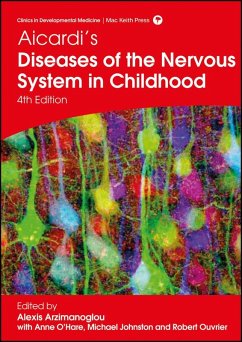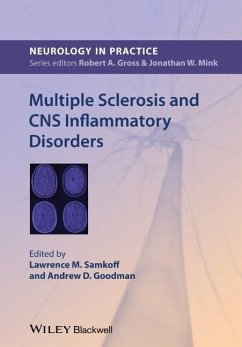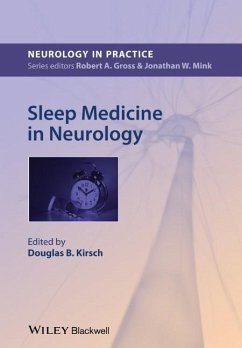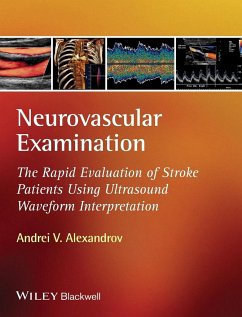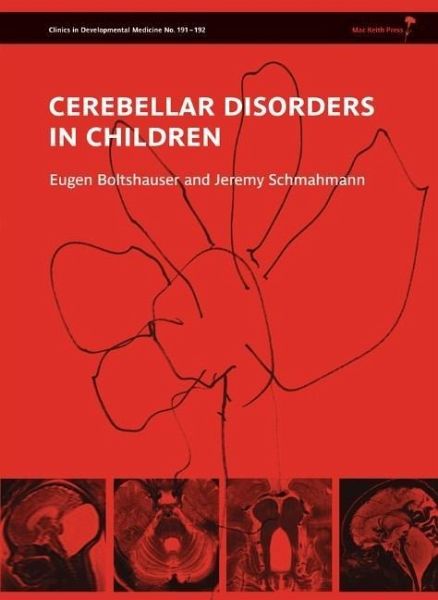
Cerebellar Disorders in Children

PAYBACK Punkte
78 °P sammeln!
Clinics in Developmental Medicine No. 191-192This clinically orientated text by an international group of experts is the first definitive reference book on disorders of the cerebellum in children. It presents a wealth of practical clinical experience backed up by a strong scientific basis for the information and guidance given. The first part sets out the theoretical underpinnings of cerebellar disorders. This is followed by sections on clinical conditions grouped according to common characteristics such as aetiology and symptomatology. The descriptions of the clinical conditions each systemat...
Clinics in Developmental Medicine No. 191-192
This clinically orientated text by an international group of experts is the first definitive reference book on disorders of the cerebellum in children. It presents a wealth of practical clinical experience backed up by a strong scientific basis for the information and guidance given. The first part sets out the theoretical underpinnings of cerebellar disorders. This is followed by sections on clinical conditions grouped according to common characteristics such as aetiology and symptomatology. The descriptions of the clinical conditions each systematically cover, as appropriate, epidemiology, prevalence, diagnostic criteria, clinical features (including course and prognosis), pathophysiology, genetics, investigations, differential diagnosis, and management and treatment.
This book will be an invaluable resource for all those caring for children affected by cerebellar disorders, including malformations, genetic and metabolic disorders, acquired cerebellar damage, vascular disorders and acute ataxias.
This comprehensive reference text on cerebellar disorders in children includes chapters on cerebellar development, prenatal cerebellar imaging, imaging of the posterior fossa, with coverage of a broad range of malformations, genetic and metabolic disorders involving the cerebellum, prenatal cerebellar disruptions (as related to prematurity), vascular disorders, tumors and paraneoplastic syndromes, as well as acute ataxia and trauma to the posterior fossa. Numerous checklists are provided to assist in the differential diagnosis of clinical signs and neuroimaging findings.
Readership:
Paediatric neurologists, paediatricians, neurologists, developmental paediatricians, neuroimaging specialists, geneticists, neonatologists
This clinically orientated text by an international group of experts is the first definitive reference book on disorders of the cerebellum in children. It presents a wealth of practical clinical experience backed up by a strong scientific basis for the information and guidance given. The first part sets out the theoretical underpinnings of cerebellar disorders. This is followed by sections on clinical conditions grouped according to common characteristics such as aetiology and symptomatology. The descriptions of the clinical conditions each systematically cover, as appropriate, epidemiology, prevalence, diagnostic criteria, clinical features (including course and prognosis), pathophysiology, genetics, investigations, differential diagnosis, and management and treatment.
This book will be an invaluable resource for all those caring for children affected by cerebellar disorders, including malformations, genetic and metabolic disorders, acquired cerebellar damage, vascular disorders and acute ataxias.
This comprehensive reference text on cerebellar disorders in children includes chapters on cerebellar development, prenatal cerebellar imaging, imaging of the posterior fossa, with coverage of a broad range of malformations, genetic and metabolic disorders involving the cerebellum, prenatal cerebellar disruptions (as related to prematurity), vascular disorders, tumors and paraneoplastic syndromes, as well as acute ataxia and trauma to the posterior fossa. Numerous checklists are provided to assist in the differential diagnosis of clinical signs and neuroimaging findings.
Readership:
Paediatric neurologists, paediatricians, neurologists, developmental paediatricians, neuroimaging specialists, geneticists, neonatologists




